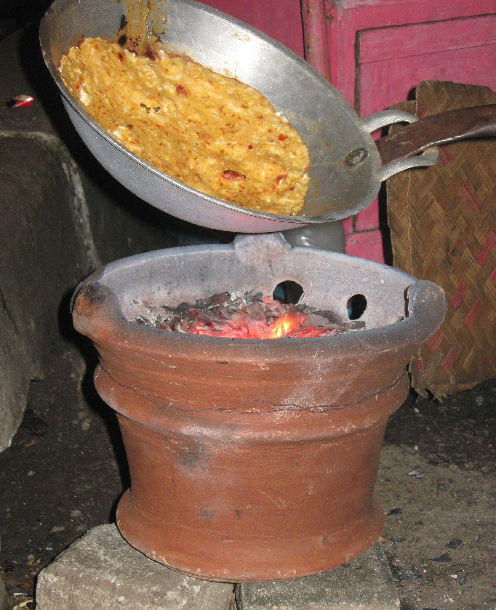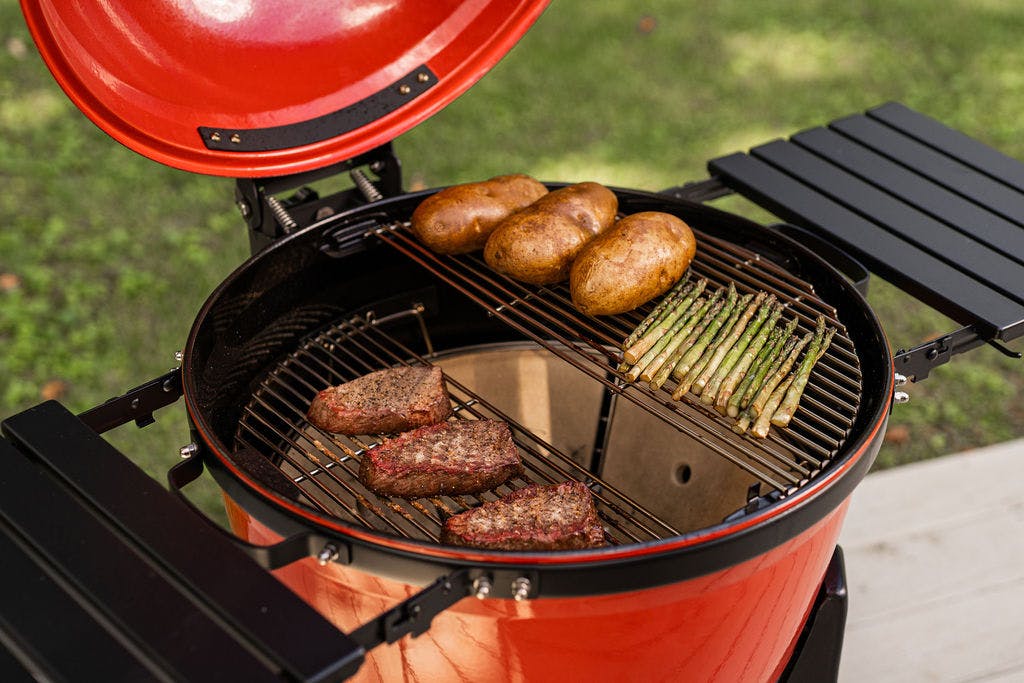The Kamado grill embodies a rich tradition of culinary innovation, dating back thousands of years. Evolving from humble clay vessels to modern masterpieces, the Kamado grill has become a versatile and cherished tool among cooking enthusiasts worldwide. This article explores its origins, transformation, and enduring appeal.
Ancient Beginnings of the Kamado Grill: Asian Origins
The history of the Kamado grill traces back over 3,000 years to ancient Asia. The term "Kamado" originates from the Japanese word for "stove" or "cooking range," but its design owes its early foundation to ancient China. The Chinese introduced the Yan steamer, a clay cooking vessel that inspired the Kamado's modern capabilities.
This innovative concept migrated to Japan during the Kofun period (300–538 AD), evolving into the mushikamado, a cooker primarily used for steaming rice. Fueled by wood or charcoal, it marked the beginning of the charcoal-based cooking method central to Kamado grilling today.
Transformation into the Japanese Kamado
In Japan, the mushikamado underwent significant refinements, incorporating key features like domed lids and airflow controls—hallmarks of the Kamado grill we recognize today. By the early 20th century, these grills had become a staple in Japanese cooking, celebrated for their heat retention and even cooking performance.
The ceramic walls of the traditional Kamado grill enhanced its ability to retain and radiate heat, enabling slow, consistent cooking. This construction ensured food retained moisture while absorbing smoky flavors, making Kamado-grilled dishes synonymous with rich taste and texture.
The Kamado Grill’s Introduction to the West
The Kamado grill gained attention in the West after World War II, when American servicemen stationed in Japan brought it back as a unique culinary tool. Its versatility quickly captured the imagination of barbecue enthusiasts.
In 1954, Ed Fisher founded Big Green Egg, pioneering the commercialization of Kamado grills in the United States. By modernizing the traditional design with advanced ceramic materials, Fisher made Kamado grills more durable and thermally efficient. The success of Big Green Egg paved the way for other brands like Kamado Joe, Primo Grills, and Vision Grills, helping the Kamado become a global grilling phenomenon.
Understanding the Effectiveness of Kamado Grills
Kamado grills are celebrated for their superior heat retention, thanks to their thick ceramic or clay construction. These features create a highly controlled cooking environment, ideal for both high-heat grilling and low-and-slow smoking.
Key Features of Kamado Grills:
- Dual Air Vents: Located at the top and bottom, these vents provide precise temperature control, allowing for a range of cooking temperatures from 200°F for smoking to over 700°F for searing.
- Egg-Shaped Design: Enhances airflow, promoting uniform heat distribution for versatile cooking techniques such as smoking, roasting, baking, and grilling.
This versatility ensures that Kamado grills are among the most adaptable and efficient outdoor cooking devices available today.
Modern Innovations in Kamado Grill Design
While the basic principles of Kamado grilling have remained consistent, modern innovations have made the experience even more user-friendly and versatile. For example:
- Divide-and-Conquer Cooking Systems: Introduced by Kamado Joe, this feature enables simultaneous cooking of different foods at varying temperatures.
- Smart Temperature Controllers: Allow for precise, hands-free cooking by maintaining consistent grill temperatures.
- Accessories: From pizza stones and griddles to rotisseries and wok attachments, today’s Kamado grills offer expanded functionality for a variety of culinary adventures.
Additionally, Kamado grills now come in various sizes, catering to different needs—from portable models for camping to larger units perfect for family gatherings.

Reasons for the Kamado Grill’s Popularity Today
Kamado grills continue to gain popularity among barbecue enthusiasts and professional chefs due to their unmatched performance and versatility. Key reasons include:
- Versatility: Perfect for grilling, smoking, baking, and roasting, Kamado grills can handle a wide range of cooking styles.
- Durability: High-quality ceramic construction ensures longevity and year-round use, even in harsh weather conditions.
- Rich Flavor: The combination of charcoal and ceramic imparts a distinct smoky flavor to food that gas or electric grills can’t replicate.
- Heat Efficiency: Kamado grills use less charcoal than traditional grills, making them both eco-friendly and cost-effective.
- Community: Kamado grilling enthusiasts form a vibrant community, sharing recipes, tips, and techniques through forums, competitions, and social media platforms.

Conclusion: Kamado Grills – A Timeless Tradition in Modern Cooking
The Kamado grill stands as a testament to enduring innovation in outdoor cooking. Originating as a clay vessel in ancient China, it has evolved into a highly versatile and efficient cooking tool. With its exceptional heat retention, precise temperature control, and ability to infuse food with rich flavors, the Kamado grill has become a staple for both seasoned grill masters and beginners alike.
Whether you’re grilling, smoking, or baking, the Kamado grill offers an unparalleled cooking experience that blends ancient tradition with modern convenience—a true timeless treasure for culinary enthusiasts.
